Search
Showing 10 of 1186 results for Value-priced treatments https://simplemedrx.top
-
Individual Prime Minister Scholarships for Asia and Latin America applications open 24 July
The Prime Minister's Scholarships are funded by the New Zealand Government and administered by Education New Zealand Manapou ki te Ao (ENZ) to support New Zealanders on learning experiences in Asia and Latin America. Flexible funding is available to support both short and long-term programmes including study abroad / exchange, internships, postgraduate study, and language programmes.
Prime Minister Scholarships are for all New Zealanders, and we welcome applicants from all walks of life and backgrounds. We're looking for New Zealanders who are passionate about global citizenship, can represent Aotearoa New Zealand overseas, and want to create positive change in their communities.
Information, alumni stories, resources and application instructions can be found on our scholarships website. The application site will go live from 24 July.
Specific enquiries or questions can also be emailed through to ENZ’s scholarship team – scholarship@enz.govt.nz or potential applicants can sign up on our scholarship page to stay updated about this scholarship round and to find out when future information sessions and workshops will be held.
Please pass these dates on to your networks.
-
NauMai NZ has a brand-new look
We are excited to share that NauMai NZ, ENZ’s student experience digital platform, has undergone a refresh and has a new look and feel, bringing it in line with the wider ENZ brand family. Check out its new look here.
NauMai NZ provides clear, timely information and advice about the things that international students want and need to know - arriving in New Zealand, study and education, health and wellbeing, New Zealand and Māori culture, exploring New Zealand, making friends, safety, money, work, and much more. It links to expert resources where appropriate and is designed to complement information provided by education providers.
NauMai NZ was launched four years ago and since then has had one million page views.
Student Experience Manager, Ross Crosson says the aims and objectives of NauMai NZ have not changed.
“NauMai NZ is still about providing trusted, accurate information to support student wellbeing, bridge the gap between expectation and reality, enable social connection, and improve student experience outcomes. The revamp is about being responsive to the needs of a wider range of students who are studying with New Zealand, not just in New Zealand” he adds.
Alongside the new look, new content has been added including,
- Life on campus (orientation, clubs, student associations)
- How to maximise your experience (goal setting and support options)
- Road safety
- Outdoor safety (including water safety, hiking and tramping, hunting/mahika kai)
- Online study for offshore students
- Global Pathways
“Just as we have over the past four years, we will continue to add new content to NauMai NZ to meet student need and expectation. The site is always evolving and feedback is welcome” Ross says.
Should you have any questions, please don’t hesitate to contact Ross, ross.crosson@enz.govt.nz.
-
Applications and nominations for the Impact Awards are open until Sunday 23 July
The Impact Awards celebrate young New Zealanders aged 16–30, who are making a difference for our communities, country and beyond. This includes those with NZ citizenship, permanent residence or other visa for five years or have the right to work/study in NZ and have been here for two years.
This year there are five different award categories - climate, enterprise, inclusion, wellbeing, and local impact categories. Applications can be made either as an individual or a group, or you can nominate someone you know.
The Awards are run by Inspiring Stories, a kiwi charity that believes in the power of young people to create change. More information about these awards including links to the application and nomination forms can be found here The Impact Awards — Inspiring Stories
-
Changes to the New Zealand Traveller Declaration Process
Travellers arriving into Auckland, Wellington, Christchurch and Queenstown Airports can now complete a digital declaration. Everyone travelling into New Zealand needs to complete a New Zealand Traveller Declaration (NZTD).
The NZTD collects travel, customs, immigration and biosecurity information and aims to improve the safety and security of New Zealand.
It’s free and needs to be completed for each traveller, including babies and children.
Key information about the online declaration process:
- Everyone travelling into New Zealand needs to complete a declaration.
- It is free and you can do it on the online form or the NZTD app.
- A declaration needs to be completed for each traveller, including babies and children.
- You can start your digital declaration at a time that suits you. The earliest time you can submit your declaration depends on whether you are travelling by air or sea.
- Your declaration is linked to your passport and is checked when you arrive at the eGate or by a border officer.
- There is a paper declaration form available for travellers who cannot complete it online.
- If you are a New Zealand visa or NZeTA holder, you still need to complete an NZTD as well.
For more information and to access the form, please visit this website: New Zealand Traveller Declaration
-
NZ Police Ethnic Services Teams supporting international students with local safety advice
Over the past twelve months, Aotearoa New Zealand has seen a welcome return of international students to our communities and our education providers. NZ Police Ethnic Services teams around the country, including in Tāmaki Makaurau Auckland, and at Lincoln University, have been busy engaging with international students in a variety of ways.
In Tāmaki Makaurau Auckland, Ethnic Liaison Officers, Constable Takashi Endo and Constable Kevin Deng, have been delivering presentations to secondary and tertiary international students on a range of safety related topics - informing them and supporting them to have a successful time living and studying in their host city.
The team has seen a great response to the presentations and due to the high demand, has also developed a “Train the Trainers” programme, designed to equip education providers themselves to deliver introductory safety training to their students. The first ‘Train the Trainers' session was recently delivered by Constables Endo and Deng to staff from over 20 education providers in Tāmaki Makaurau Auckland. The session covered a range of topics including personal safety, road safety, family harm, hate crime/incidents, alcohol/drugs and water safety.
Constable Endo said that he was encouraged to see so many school representatives at the training session and they were very interested in the topics covered, following up with many useful questions.
He also said, "This training session is not going to be a one-off, and we will also continue to visit schools and speak with international students when required. Our aim is to ensure students and school staff have a greater understanding of safety and safety issues here in Tāmaki Makaurau Auckland.’
Following the training day, both constables will attend education provider seminars as observers to ensure staff are supported and equipped to deliver these safety sessions.
Melody Hao, International Coordinator – International Business/Student Support at Unitec Insitute of Technology, expressed the gratitude of her team to the Ethnic Services Team following their presentation at Unitec’s International Orientation Day on Wednesday 19 July.
“The session delivered by Constable Endo was well-received by the 220 people that attended. In our post-orientation survey, 97.5% of respondents said they really enjoyed or enjoyed this presentation.
"Feedback from the student audience included that the session was full of useful safety information and that it was delivered in a fun and interactive way. Thank you to the team for such a wonderful presentation and for being so supportive to our international students as they embark on their international student experience with us here in Aotearoa New Zealand," added Melody.
Another recent safety initiative was delivered by Constable Deng alongside Massey University student representative, Jun Jiang. Together they delivered a ‘safety’ livestream via Education New Zealand’s Manapou ki te Ao (ENZ) NauMai NZ WeChat mini programme in July. NauMai NZ WeChat livestreams are an important channel where experts and students themselves address a range of topics relevant to Chinese students living and studying in Aotearoa New Zealand.
Constable Deng and Massey University international student representative, Jun Jiang following the delivery of a safety focused livestream on ENZ’s WeChat mini programme platform.
Faymie Li, ENZ's Senior Advisor, Student Experience said that the safety of our students is always front of mind.
“Looking after our students and equipping them with useful information that supports them during their time with us here in Aotearoa New Zealand is really putting into practice, Manaakitanga – the Māori value of hospitality, kindness, support, respect and care for others.
"These sessions conducted by the NZ Police Ethnic Services Teams are an important tool in helping ensure our international students have a positive experience while studying with us. The livestream had 186 people tuning in and since then it has been watched over 170 times. This demonstrates that such sessions are of great value to our students,’’ said Faymie.
The recording of the livestream is hosted on the mini programme and can be accessed by scanning the QR code below.

QR code to access ENZ’s NauMai NZ WeChat mini programme
Further information on the Tāmaki Makaurau Ethnic Services Team
The team works in partnership with ENZ, local consulates, education providers, the New Zealand International Students’ Association, and other student representatives, to support the wellbeing of international students in Tāmaki Makaurau Auckland. This partnership ensures information is shared, potential issues are anticipated and responded to where possible, and shared work initiatives delivered where appropriate.
-
Inaugural Chief Executive Grant McPherson moving on after 12 years of service
Grant has been in the role since ENZ’s inception nearly 12 years ago, leading the organisation’s development and growth to what it is today.
“Over the course of his leadership, we saw significant growth of the international education sector that saw it become New Zealand’s fourth-largest export earner pre-Covid.
“ENZ launched the “Think New” brand and received several international and local awards recognising achievements in public relations and marketing (including digital). We have been entrusted by our NZ Inc. partners with initiatives such as the Manaaki scholarships.
“Alongside the highs, Grant also led the efforts to help the sector manage the challenges brought on by the pandemic. He chaired the International Education Chief Executives' Group. Together with peers from other government agencies with interests in international education, the group helped to drive the Government's International Education Recovery Plan.
“If the New Zealand International Education Conference KI TUA in August 2023 was anything to go by, the international education sector is in good heart and energised to rebuild.
“I appreciated Grant’s support as I took on the Chair role earlier this year. The Board and I thank him sincerely for his service and wish him well,” Tracey said.
Grant says he is proud of the incredible work ENZ and the international education sector have been doing to take New Zealand education to the world, particularly how we have navigated the complex environment post the pandemic.
“It’s fantastic to see what ENZ and the international education sector have achieved in such a short span of time. It has been an amazing adventure made possible by the great people of this organisation and this sector, thank you,” he said.
Grant will finish his role in mid-November and Dr Linda Sissons has been appointed as Acting Chief Executive while ENZ undertakes the recruitment process for a new Chief Executive.
-
Thai interest in New Zealand as an offshore study destination is growing
The annual Education New Zealand Manapou ki te Ao (ENZ) Bangkok Fair took place on Saturday 26 August with 1,630 attendees visiting throughout the course of the day, a record number for the Fair.
Those who attended had the opportunity to talk to more than 50 education providers that were representing Aotearoa New Zealand education across the school, vocational, English language, and university sectors.
Ben McNally Burn, ENZ’s International Market Manager for Southeast Asia & India added that it was fantastic to see Thai interest in considering Aotearoa New Zealand as an offshore study destination growing.
“Having record numbers attend our Bangkok Fair this year demonstrates how important and reputable these fairs have become for prospective parents and students wanting to access reliable information directly from New Zealand education institutions.
“For our education partners, these events are so important for maintaining in-market credibility and reputation and we cannot underestimate the importance of keeping New Zealand front of mind. Especially in amongst accelerated competitor activities in Thailand including seminars and fairs hosted by Education USA, the Canadian Embassy, Austrade, and the British Council”, said Ben.
Ms. Kirsty Bundell, Assistant Director of Mathematics and Statistics at Avondale High School conducted five simulated classrooms to showcase hands-on New Zealand teaching and learning styles. Featured here is a class on Geometry - ‘SURFACE AREA OF 3D SHAPES’.
Feedback from the sector representatives was overwhelmingly positive, noting that not only was there a fantastic turn out of attendees but that prospective students had clearly researched Aotearoa New Zealand and its educational offerings prior to coming, which led to engaging discussions.
Anne Henwood, Director of International Students at Rosehill College in Auckland said that she was thrilled by the exceptional experience at the 2023 Bangkok Fair.
“The events proved to be an invaluable opportunity for New Zealand schools, fostering connections and opening doors to agents, parents and students seeking quality education. The events brilliantly showcased the diverse educational opportunities for Thai students in New Zealand.”
Garry Chronican, Director Pathway, University of Otago | Te Whare Wānanga o Otāgo also said that it was a pleasure to attend such a well-run and valuable event.
“The standard of advertising, communication, organisation and overall experience was outstanding. The events were well supported by education agencies – a testament to the excellent relationship ENZ staff have with local stakeholders”.
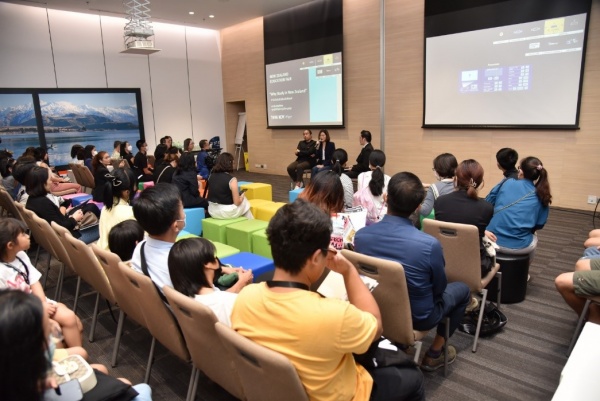
“Why study in New Zealand” special seminar held by key opinion leaders Choak and Suquan Bulakul. Their son is currently studying in New Zealand.
ENZ also delivered an agent seminar in Bangkok on 25 August, just prior to the Education Fair. The Bangkok Agent Seminar offered an opportunity for NZ institutions to reconnect with high performing Thai education agents. This event included market updates, networking opportunities, along with 1-to-1 meetings throughout the day.
Following the ENZ agent seminars and fair, the ENZ team partnered with local schools and agents to take part in three separate mini fairs and school roadshows across Thailand including in Chiang Mai, Phuket and Chonburi.
Any institutions looking to be involved in other ENZ organised fairs and events in the future in any of our markets, can do so by visiting ENZ’s events page here.
-
Highlights from Education Fairs and events in Japan and Viet Nam
Japan
In early October, ENZ welcomed 844 visitors to engage with 40 New Zealand education providers representing the school, vocational, English language and university sectors at the first New Zealand student fair in Japan since 2019.
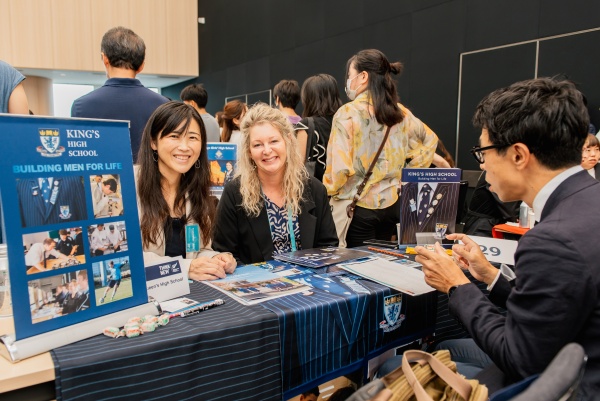
Teresa Robertson, International Director from King’s High School with Eriko Ishiguro, an interpreter.
The fair at Roppongi Academy Hills in Tokyo on 1 October had a programme of events that highlighted the strong connections between our two countries. Over the following two days, 49 and 45 of the visiting New Zealand education providers attended the ENZ Agent Seminars in Tokyo and Osaka respectively. Both seminars saw a record number of local agents and education providers, with 181 present in Tokyo and 77 in Osaka.
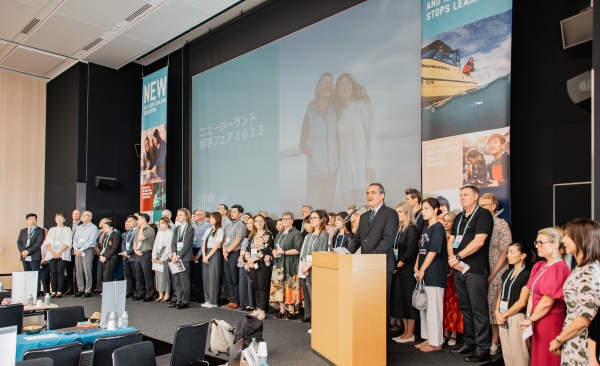
His Excellency Hamish Cooper, New Zealand Ambassador to Japan with the New Zealand contingent. The New Zealand education providers sang two waiata to support the Ambassador’s speech. A recording of ENZ’s waiata ‘Manapou ki te Ao’ was played and explained in Japanese to convey the waiatas’ meaning and lyrics.
Misa Kitaoka, ENZ’s Director of Education - Japan said that these events proved a great opportunity for the institutions to network with local school representatives, education and travel experts and gain valuable insights into the Japanese market. She also said that there was an evident increase in interest in long-term study in New Zealand both at the school and tertiary levels, compared with pre-Covid.
"This new trend is testament to the well-established presence New Zealand now has as a study destination in Japan. It can also be attributed to the effects of the Japanese government’s internationalisation policy in the education sector. With over 200 International Baccalaureate schools in Japan, more students are bilingual and eligible for direct entry to New Zealand universities.
There are also over 500 Japanese universities now adopting ‘sogo gata senbatsu’ (comprehensive admissions) that provide a holistic assessment of the applicants including their English language skills and overseas experience. This means that more students are choosing to complete secondary school education in New Zealand to apply to Japanese universities,” said Misa.
The education events along with pre-departure briefings where Japanese market insights were shared and the welcome reception upon arrival with key Japanese education stakeholders and partners were all well-received by the education providers in attendance.
Kerrie Hodgson, Internationalisation Business Partner, Te Pūkenga New Zealand Institute of Skills and Technology said it was clear that great effort was put into promoting the events and New Zealand education. “The numbers were high, and I felt that enquiries were more in depth than previous years, and beyond English Language study,” said Kerrie.
Renee Millner, International Director for Western Heights School in Rotorua added that the market insights provided ahead of their arrival were a great introduction to significant changes within the Japanese market.
Viet Nam
Following the action-packed week in Japan, the focus shifted to Viet Nam where the ENZ teams held several New Zealand education events in Ho Chi Minh City and Ha Noi.
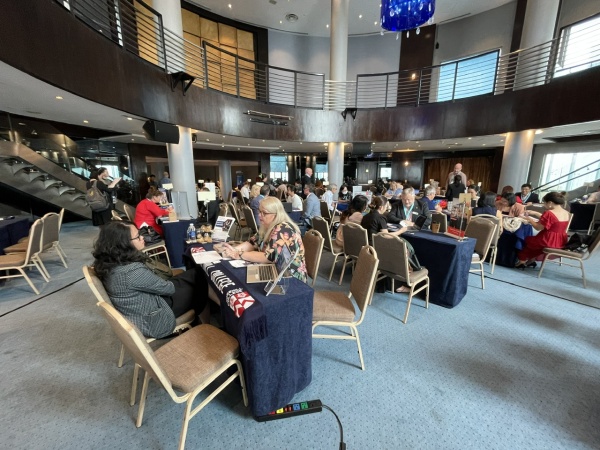
NZ institutions had one-to-one meetings with Vietnamese agents at two ENZ Agent Seminars in Viet Nam.
The series of events began with 19 NZ Masterclasses delivered over two weekends. Over 800 students registered for these online classes, in which New Zealand academics delivered a 40-minute lesson. This was followed by recruitment representatives introducing the entry requirements, scholarship opportunities and benefits of studying in New Zealand. Following the masterclasses, representatives of all eight New Zealand universities visited several schools in Ho Chi Minh City and Ha Noi, presenting to students and their families at information sessions and in some cases, taking part in mini-fairs.
Ho Chi Minh City was then host to two flagship ENZ events; the Agent Seminar and Counsellors Meet-up and following this, the NZ Education Day Fair. There was significant interest in both events with 50 Vietnamese agents meeting with 29 New Zealand institutions while 25 Viet Nam schools’ counsellors met with all New Zealand universities and Te Pūkenga. The New Zealand Education Fair saw over 500 visitors through the event with 385 leads generated.
Ha Noi followed suit with the Agent Seminar and Counsellors Meet-up attracting 40 Vietnamese agents meeting with 27 New Zealand institutions while eight Viet Nam school counsellors met with all New Zealand universities and Te Pūkenga. The events finished with a second popular Education Fair with visitors estimated at about 400 people resulting in 258 student leads.
Van Banh, ENZ's Market Manager for Viet Nam said that this year's education events had a mix of the traditional with a more interactive, modern, and sustainable approach which resonated well with attendees.
"Our team wanted to make these events as fun and interactive as possible to show what a New Zealand education is all about. In addition to the one-to-one opportunities for students and parents to talk to the New Zealand institutions, there were workshops with the participation of key opinion leaders, and well-known English IELTS trainers. There were also activities run by our partners such as English skills testing and minigames about New Zealand.
“We also took a more sustainable and innovative approach to our events to support the messaging that we communicate to students about New Zealand being a country that cares about sustainability and the environment, with an eye to the future through innovation. We replaced traditional printed backdrops with digital ones shown on TV screens for each booth, significantly reducing our waste and energy usage in manufacturing production. Our main stage also had a set of three interactive and eye-catching LED screens.
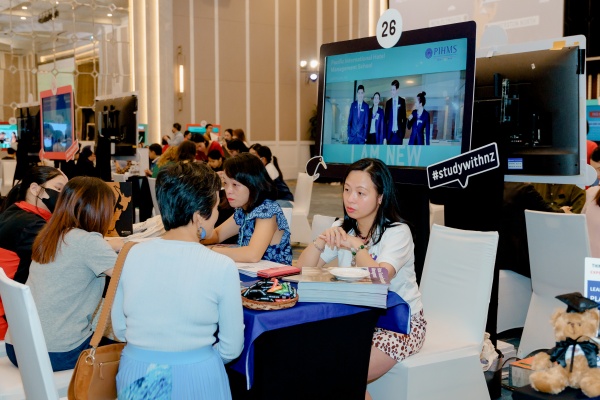
ENZ’s Regional Director for Asia, Ben Burrowes, attended both events and said, “on behalf of the ENZ teams in Viet Nam and Japan, I would like to extend a huge thank you to the New Zealand education providers who attended our events this year.
“As we all know, these face-to-face connections are extremely valuable as we continue to rebuild New Zealand’s education brand in such an important region for our sector. We look forward to hosting you again soon."
-
Come back to NZ! Nau mai hoki mai rā!
Education New Zealand Manapou ki te Ao (ENZ) is inviting New Zealand education providers to take part in an initiative to encourage students from Thailand who have previously studied here to return to New Zealand for further study. Providers are invited to subsidise travel for returning students - up to a maximum of NZD $3,000 for students returning for a year or more.
The scheme will work by students or agents providing proof of previous study and once the students are in New Zealand, can rebate the air fare back to their account through coordination with their agents. The amount students can rebate is based on the receipt of their booked travel but no more than the $3,000 cap. New Zealand schools who were involved in the recent education events in Thailand gave positive feedback on this concept.
ENZ will publicise the initiative online, via agents, the Ministry of Foreign Affairs and Trade, and media. Education agents will also be asked to co-promote this with us while KTC credit card, the scheme’s credit card partner, will be promoting this campaign and additional benefits through their own database and PR channels.
If you are an education provider interested in signing up or finding out more about the campaign, please click here.
-
Beware of phone scam targeting visa holders in New Zealand
The scam states the call is coming from 'The Immigration Bureau' saying there is a 'serious problem with your visa'. The call then prompts recipients to press different numbers for English or Chinese services.
Please be aware that this is not a genuine call from Immigration New Zealand.
If you or someone you know receives this call, do not engage any further and hang up the call.
New Zealand visa holders – including international students – receiving this call and needing reassurance on their current visa situation can call Immigration New Zealand’s Service Centre to discuss any visa matters directly.
Read this article to learn what to do if you, or someone you know are targeted by this phone scam.

